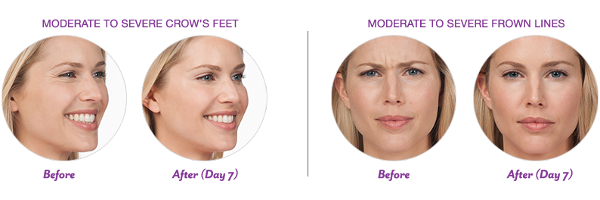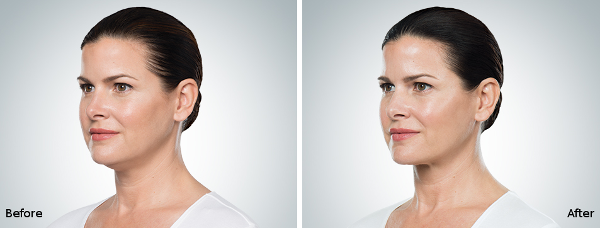Skin Therapy
Skin therapy is the range of practices that support skin integrity including nutrition, avoidance of excessive sun exposure, and appropriate use of emollients; that enhance appearance such as use of cosmetics, botulinum, exfoliation, fillers, laser resurfacing, microdermabrasion, peels, retinol therapy; and that remediate skin break down and relieve skin conditions.
Laser and Filler Treatments
Ablative lasers vaporize your scar, allowing smoother skin to take its place. Non-ablative lasers help activate the production of collagen without damaging the surface of your skin.
Filler injections can help fill in the indentations left behind from deep acne scars, says Ron Moy, MD, a former president of the American Academy of Dermatology. But the downside to fillers is that they need to be repeated every 4 to 6 months, as the product reabsorbs into the skin over time.
BOTOX®

Doctors have been using BOTOX® for years to successfully treat wrinkles and facial creases. BOTOX® is a brand name of a toxin produced by the bacterium Clostridium botulinum. There are also other brand names, such as Dysport and Xeomin.
How Does BOTOX® Work?
BOTOX® blocks signals from the nerves to the muscles. The injected muscle can't contract. That makes the wrinkles relax and soften.
BOTOX® is most often used on forehead lines, crow's feet (lines around the eye), and frown lines. Wrinkles caused by sun damage and gravity will not respond to Botox. It can also be used for lip lines and for the chin and corner of the mouth and neck.
BOTOX® Treatment to Improve Facial Appearance
Besides relief from jaw pain, tension and headaches, patients see a dramatic change in appearance after 2-3 sessions of BOTOX® treatments. The square, heavy appearance of their lower face softens into a more narrow and esthetically pleasing one.
BOTOX® Treatment for Gummy Smiles
Gummy smile refers to the excessive display of gum tissue when smiling, often considered unattractive.
What Causes a Gummy Smile?
- Overgrowth of the upper jaw
- Short upper lip
- Hyperactive upper lip; most common in females
- Overgrowth of gum tissues
What are the Benefits of the Gummy Smile BOTOX® Treatment?
An injection of BOTOX® above the upper lip reduces the lifting action of lip muscles, thus reducing the display of gum tissues. Treatments provide patients with a more aesthetic and beautiful smile.
How Long do the Treatments Take and Last?
Treatments are painless and take 2-5 minutes. The results can last between 3-4 months.
Dermal Fillers
Dermal fillers help to diminish facial lines and restore volume and fullness in the face. As we age, our faces naturally lose subcutaneous fat. The facial muscles are then working closer to the skin surface, so smile lines and crow's feet become more apparent. The facial skin also stretches a bit, adding to this loss of facial volume. Other factors that affect the facial skin include sun exposure, heredity, and lifestyle.
Dermal fillers can be used to:
- Plump thin lips
- Enhance shallow contours
- Soften facial creases and wrinkles
- Improve the appearance of recessed scars
Dermal fillers can be very helpful in those with early signs of aging, or as a value-added part of facial rejuvenation surgery.
Lip Augmentation
Lip augmentation is a cosmetic procedure that can give you fuller, plumper lips. These days, an injectable dermal filler is the most commonly used method of lip augmentation.
There are many types of dermal fillers that can be injected in your lips and around your mouth. But the most common fillers today are products that contain substances similar to hyaluronic acid. Hyaluronic acid is a natural substance found in the body. It helps increase volume in your lips.
JUVÉDERM® is used in all our skin care treatments. JUVÉDERM® is the #1 selling collection of hyaluronic acid fillers in the US. Each product in the JUVÉDERM® collection of fillers adds volume to a different area of the face to lift cheeks, smooth parentheses lines, or plump the lips. The results are natural looking and long lasting.
What is JUVÉDERM® Made From?

The JUVÉDERM® collection of fillers is made from hyaluronic acid (HA). What's interesting about HA is that it's a natural substance in the skin that delivers nutrients, helps the skin retain moisture and softness, and adds volume. Each product in the JUVÉDERM® collection of fillers is made from a modified form of HA.
What Should You Expect From JUVÉDERM®?
Your aesthetic specialist administers the treatment during a brief office visit. JUVÉDERM® VOLUMA® XC, JUVÉDERM® XC, and JUVÉDERM® Ultra XC contain lidocaine to help minimize discomfort during treatment. If you’re still concerned about treatment discomfort, your aesthetic specialist may offer additional anesthetic options for you.
What is KYBELLA®?

KYBELLA® is a prescription medicine used in adults to improve the appearance and profile of moderate to severe fat below the chin (submental fat), also called "double chin."
It is not known if KYBELLA® is safe and effective for use outside of the submental area or in children less than 18 years of age.
Who should not receive KYBELLA®?
You should not receive KYBELLA® if you have an infection in the treatment area.
Before receiving KYBELLA®, tell your healthcare provider about all of your medical conditions, including if you: Have had or plan to have surgery on your face, neck, or chin; have had cosmetic treatments on your face, neck, or chin; have had or have medical conditions in or near the neck area; have had or have trouble swallowing; have bleeding problems; are pregnant or plan to become pregnant (it is not known if KYBELLA® will harm your unborn baby); are breastfeeding or plan to breastfeed (it is not known if KYBELLA® passes into your breast milk; talk to your healthcare provider about the best way to feed your baby if you receive KYBELLA®).
Tell your healthcare provider about all the medicines you take, including prescription and over-the-counter medicines, vitamins, and herbal supplements. Especially tell your healthcare provider if you take a medicine that prevents the clotting of your blood (antiplatelet or anticoagulant medicine).
Acne Scars
If you see signs that your acne is leaving a scar on your skin, you don't have to grin and bear it. There are lots of ways to heal your scars and keep new ones from forming.
